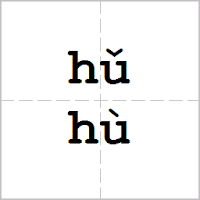Chinese
Dragon
Chinese Dragon, this
mythological symbol dates back to 3000 BC and stands for happiness, immortality, procreation, fertility and activity.
Chinese Dragons were believed to ward off evil spirits. Take a look at a
Chinese city and you will see dragons decorating ancient monuments and
buildings, sometimes playing with a pearl or thunder-ball. One can also see
dragons on the garments of ancient Chinese generals. The Emperor alone had nine
of them on his brocade.
In ancient days the dragon
was regarded as a most sacred animal, and used to be the imperial emblem of
Chinese emperors. It is the first of the four Divine Creatures to Chinese-the
others being the unicorn, the phoenix and the tortoise. Unlike the evil dragon
the West, the Chinese Dragon is a beneficent and gracious creature and is
worshipped as the divine ruler of Lakes, Rivers and Seas. It is the powerful
yet gentle "Long" that brings rain to the earth, hastens the crops
and cools the toiling framer. It is one of the most popular of Chinese art
motifs, being sculptured on stone pillars of Chinese temples and embroidered on
beautiful gold and silk tapestries.
Chinese Dragon is also the symbol of the Chinese race. Chinese proclaim themselves "Long De Chuan Ren" (Descendents
of the Dragon). Chinese emperors think they are the real dragons and
the sons of heaven. Thus the beds they sleep on are called the dragon beds, the
throne called the dragon seat, and the emperor's ceremonial dresses called the
dragon robes.
What's
the dragon look like?
According to Chinese
mythology, dragons lived under the surface of the Earth and only visited the
world in the second month of the Chinese calendar to cause rain and thunder.
They looked like snakes and had no wings. Each one of its four short legs had
five toes. Even though depicted without wings the Chinese dragon is believed to
fly and is usually painted against the clouds and the sun or moon.
Nobody really knows where
the dragon comes from. The dragon looks like a combination of many animals. For
the Chinese people, Dragons were described visually as a composite of parts
from nine animals: The horns of a deer; the head of a camel; the eyes of a
devil; the neck of a snake; the abdomen of a large cockle; the scales of a
carp; the claws of an eagle; the paws of a tiger; and the ears of an ox. The
Chinese word for Dragon is spelled out in roman characters as either lung or
long. In China, the Dragon was credited with having great powers that allowed
them to make rain and to control floods (by striking the river with its tail,
causing it to open and thus divert the floodwaters) also Dragons are credited
for transportation of humans to the celestial realms after death. Also, in
China, Dragons are symbols of the natural world, adaptability, and
transformation. When two dragons are placed together but turned away, they
symbolize eternity via the famous Yin-Yang.
Chinese
Dragon and Chinese festival
The Chinese Spring
Festival, the Chinese dragon is seen parading in the streets. The Day of the
Lanterns is another celebration where dragons are seen parading. In parade
appearance, the dragon performs its gyrations in pursuits of a costumed figure
who holds aloft a pole with a ball on the end called the "Precious
Pearl." The creature's movement and tempo are controlled by this leader
who manipulated the "pearl" according to plan, accompanied by drums
and gongs.
In China the dragon is
known as the ruler of spring that positively influences natural growth. In the
area of wealth the same principle applies and so wealth will not be achieved in
a dragon year if one's motivation is greed. A balanced attitude towards life is
required.





















